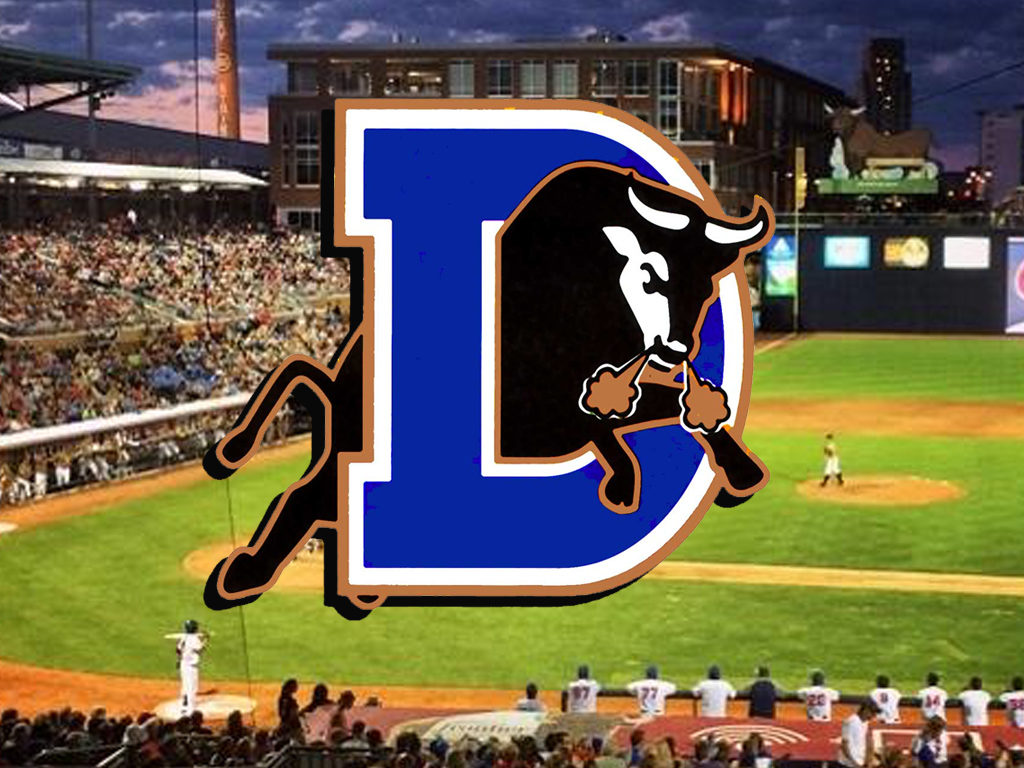
If Raleigh gets MLB, what happens to the Durham Bulls?
We fully expect this to be the question on most people’s minds, and rightfully so. We’ll preface by saying, we love the Bulls and believe this can be a win-win for all.
In short, the Bulls aren’t going anywhere.
Prior to last year, within the 218 pages of The Official Professional Baseball Rules Book was Rule 52; Major and Minor League Territorial Rights. While we’re sure you’d love to dig into the nitty-gritty, here is a brief synopsis and series of events that would happen if Raleigh were to get an MLB franchise.
That rule stated that all higher-level teams are granted territorial rights. Whether it’s Single-A versus Double-A or MLB versus MiLB, the top tier gets full rights. If Raleigh were to get a franchise, they would have had the rights to Wake County and the surrounding territory.
With Rule 52, Raleigh would have been able to come in and gain territorial rights, but last year Rule 52 was removed from the rule book.
That said, nothing changes for Raleigh. Territorial rights are now a lot more vague in the rule book but are loosely defined by county lines. At the end of the day, the same rules apply in our case.
So why did MLB remove Rule 52?
Well, they haven’t said, but if you watch what has been going on, you can start to understand.
In 2021 MLB essentially took over Minor League Baseball, which was operating as its own entity. They came in and restructured things, eliminating a few teams and restructuring things in a way where each franchise’s top four affiliates will include one team apiece at Triple-A, Double-A, high-A, and low-A.
After doing that, MLB said that big league teams would be an average of 200 miles closer to their Triple-A affiliates, allowing most to be within driving distance of their parent team.
So how has that played out?
We did a full Twitter (X) thread on this. Check it out…
🎵 𝙏𝙝𝙚𝙮’𝙧𝙚 𝙩𝙖𝙡𝙠𝙞𝙣𝙜 ‘𝙗𝙤𝙪𝙩 𝙙𝙞𝙨𝙩𝙖𝙣𝙘𝙚. 𝙏𝙝𝙚𝙮’𝙧𝙚 𝙩𝙖𝙡𝙠𝙞𝙣𝙜 𝙈𝙇𝘽𝘽𝘽𝘽𝘽𝘽𝘽🎵
Might be a surprise to most, but having MLB close to affiliate clubs is nothing new. In fact, a QUARTER of MLB clubs have their AAA affiliate within 60 miles.
A 🧵; pic.twitter.com/nsxt6FkOkp
— MLBRaleigh (@MLBRaleigh) June 7, 2023
In short, the last two AAA teams that were added were within 23 miles of their MLB affiliate. (St. Paul Saints/Twins & Sugar Land/Astros) and if the Oakland/Vegas deal goes through, it would make a third, with the Aviators being just 12 miles from the proposed stadium site in Vegas.
MLB said this would be their new strategy and you’re seeing them put that into action. So if Raleigh were to be awarded a team, there would eventually be the option for the Bulls to change affiliates and become the AAA franchise of the Raleigh-based team.
But this strategy is brand new. How do we know it will work? Is there any historical precedence?
There is. Let’s take a look at Seattle.
The Mariners’ Triple-A franchise lies just under 30 miles away in Tacoma, WA, creating a situation much like the one we’d face in the Triangle if Raleigh were to get an MLB team.
The Tacoma Rainiers were founded in 1960 as the Tacoma Giants and played in the Pacific Coast League (Triple-A). In 1977 the Seattle Mariners joined MLB as an expansion team and set up shop just under 30 miles from Tacoma’s ballpark. In 1980 Seattle’s population was checking in at 493,846 (Raleigh’s current population is 464,758); The two have coexisted with no problems and have done well in attendance rankings over the years.
This past season, the Mariners ranked 14th out of 30 MLB teams in attendance (averaging over 28k per game), while the Tacoma Rainiers ranked 30th out of 160 MiLB teams.
Meanwhile, the Durham Bulls remain a Top-10 team year in and year out in MiLB attendance rankings. These numbers suggest, that with our area’s projected growth and their proven popularity, the Bulls could remain in Durham, while Raleigh welcomes a new MLB team.
—
(This article was updated 5/24/23 to include the removal of Rule 52 and the MLB re-alignment of MiLB)
Comments are closed.